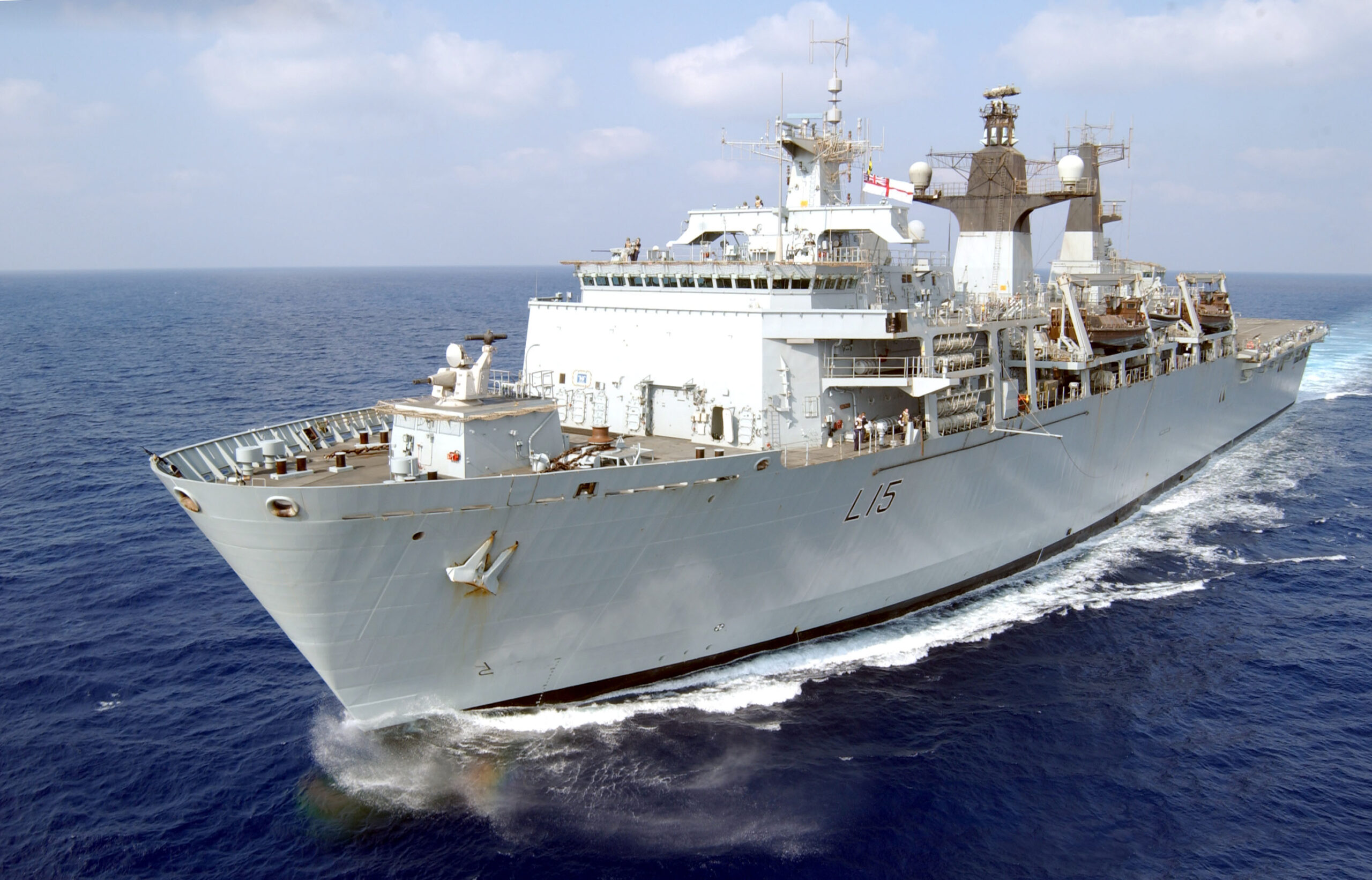This new book looks back at how the Royal Navy has changed and adapted during the reign of the late queen from the Cold War and the Falklands to today’s modern fleet
By the end of the Second World War, Britain’s Royal Navy was at the peak of its powers, emerging victorious despite immense adversity in the Pacific, Mediterranean and Atlantic theatres. However, this supremacy on the waves was followed by a period of gradual decline, as the huge demands of the global conflict disappeared. This watershed moment for the navy coincided with the start of a new era for the nation, and the reign of Queen Elizabeth II. Over the next seven decades, the Royal Navy underwent a huge amount of change, transitioning from a vast imperial fleet that ruled the waves and defended the Empire, to a smaller but nonetheless potent force. In his new book, Elizabeth’s Navy: Seventy Years of the Post-War Royal Navy, author and maritime historian Dr Paul Brown retraces the story of the navy. Here he shares the stories of seven famous warships, one from each decade of service to Elizabeth II.
1950s
The aircraft carrier Eagle was completed in 1951 and after trials and work-up she joined the Home Fleet in March 1952, with Attacker, Sea Hornet, Firefly and Skyraider aircraft embarked. Her first overseas service began in February 1954 when she was deployed to the Mediterranean for four months. During the 1956 Suez campaign the Navy’s strike force was led by the aircraft carriers Eagle, Albion and Bulwark, flying Sea Venoms and Sea Hawks. Between 1 – 6 November Eagle launched 621 sorties. Eagle remained one of the Navy’s main strike carriers until paid off in 1972.
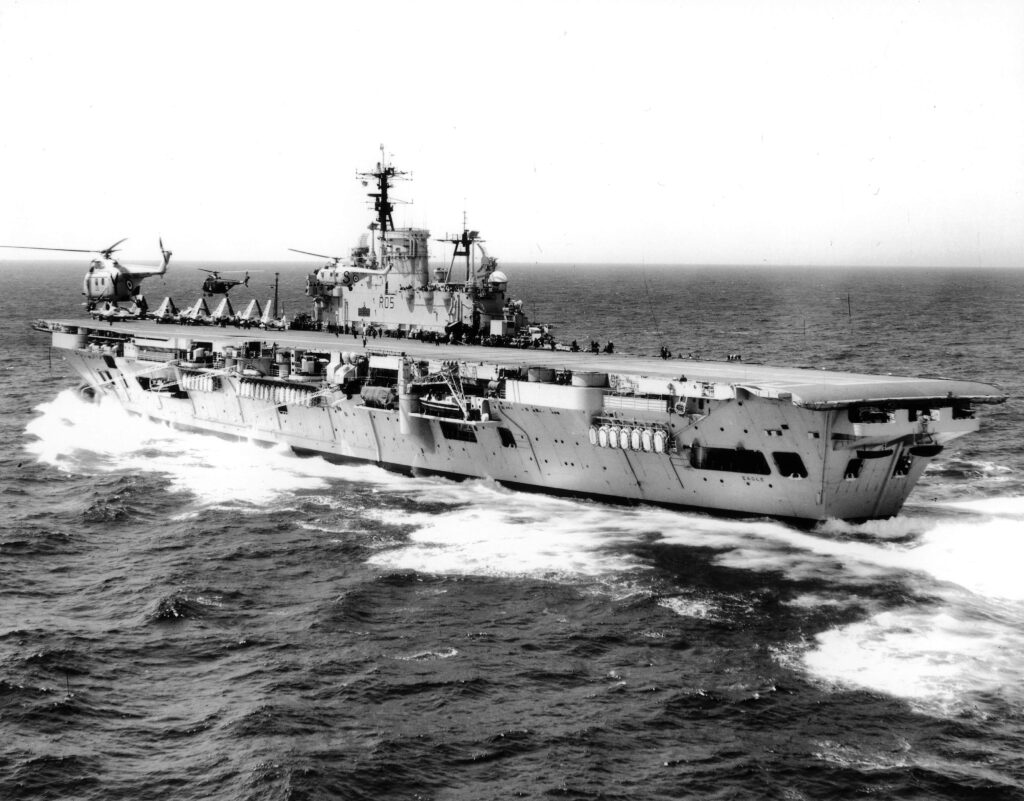
1960s
Rothesay was the lead ship of the Rothesay class frigates, whose primary role was anti-submarine warfare, to counter the threat posed by the growing fleet of fast Soviet submarines. She was completed by Yarrow, Scotstoun, in 1960. Her original armament of a twin 4.5-inch gun forward, twin 40mm gun aft, two Limbo anti-submarine mortars aft and twelve 21-inch homing torpedo tubes on the side-decks aft is clearly visible. In 1966-68 she was modernised and equipped with Seacat missiles and a Wasp helicopter.
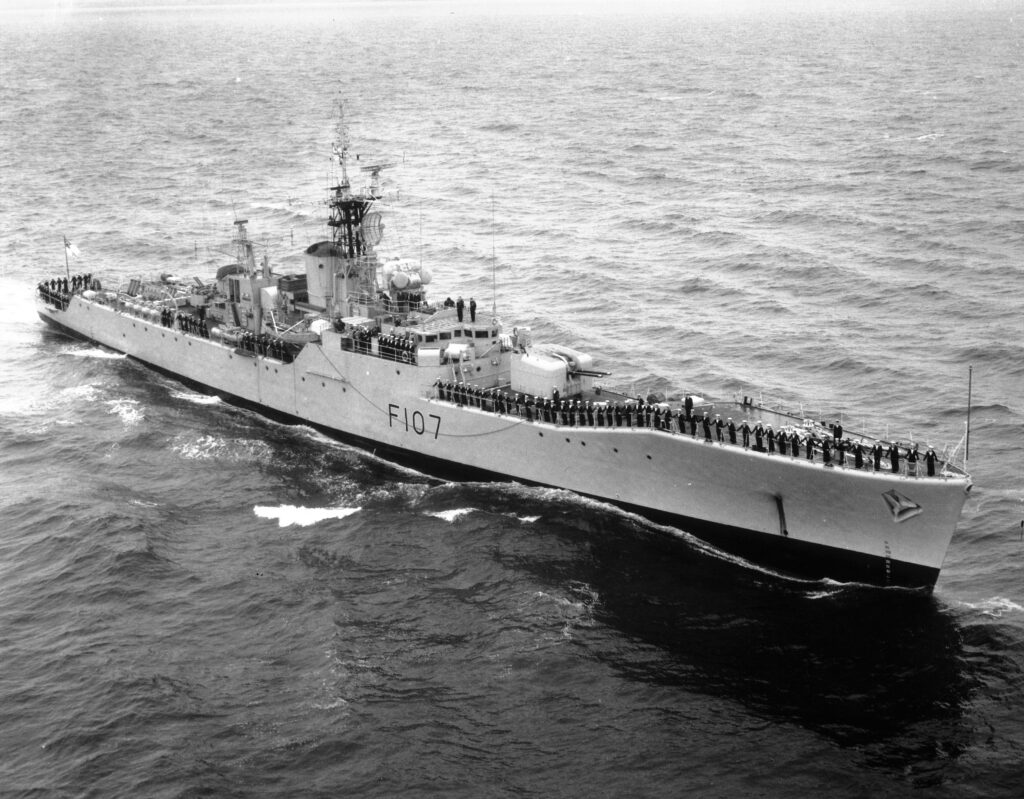
1970s
Antelope, a Type 21 frigate, was completed in 1975. The Type 21s were designed by commercial shipbuilders – Vosper Thornycroft and Yarrow – rather than by the Navy’s own naval constructors, and had aluminium superstructures, rather than steel. They were the first all gas turbine frigates built for the Navy, giving large savings in engine-room personnel. They were popular ships in the Navy, well liked for their speed and sleek appearance. Antelope was lost in the Falklands War after being bombed whilst defending the landings in San Carlos Water.
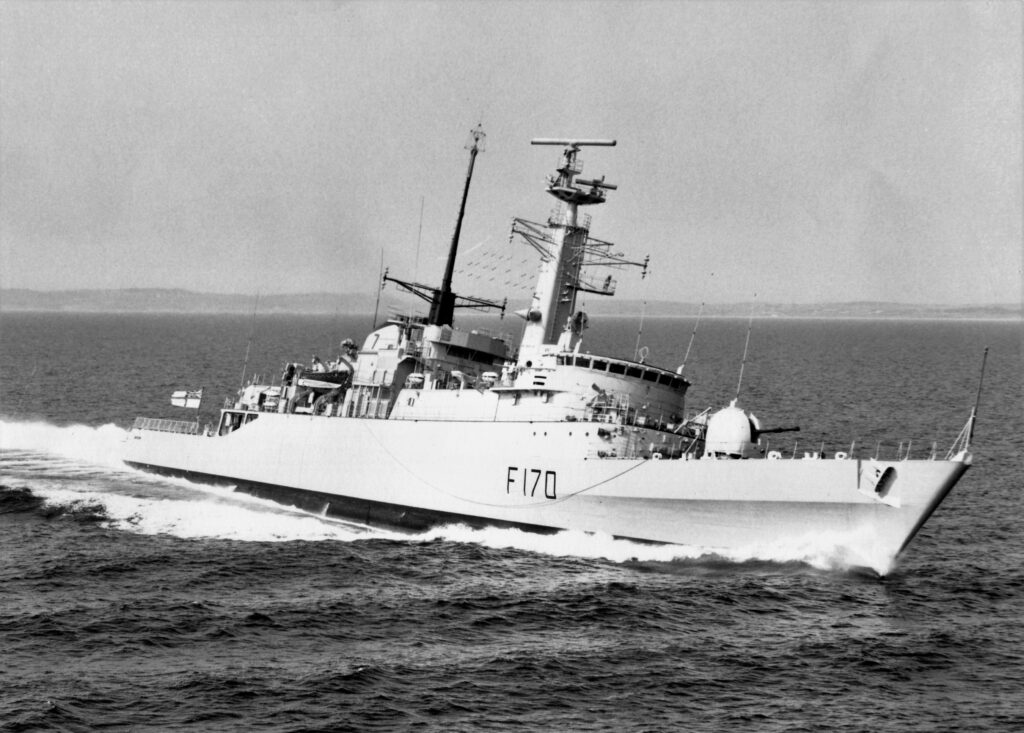
1980s
The Trafalgar class nuclear-powered attack submarine, Turbulent, at sea. She had been completed in 1984 and was equipped to fire Tigerfish torpedoes and Sub-Harpoon anti-ship missiles. Her Cold War roles included trailing Soviet ballistic-missile-armed submarines and protecting the British Resolution class Polaris submarines. In 1997, like other boats in her class, which was a refinement of the Swiftsure class, she was equipped to fire Spearfish torpedoes and Tomahawk cruise missiles. In 2003 she took part in the invasion of Iraq, firing thirty Tomahawks.
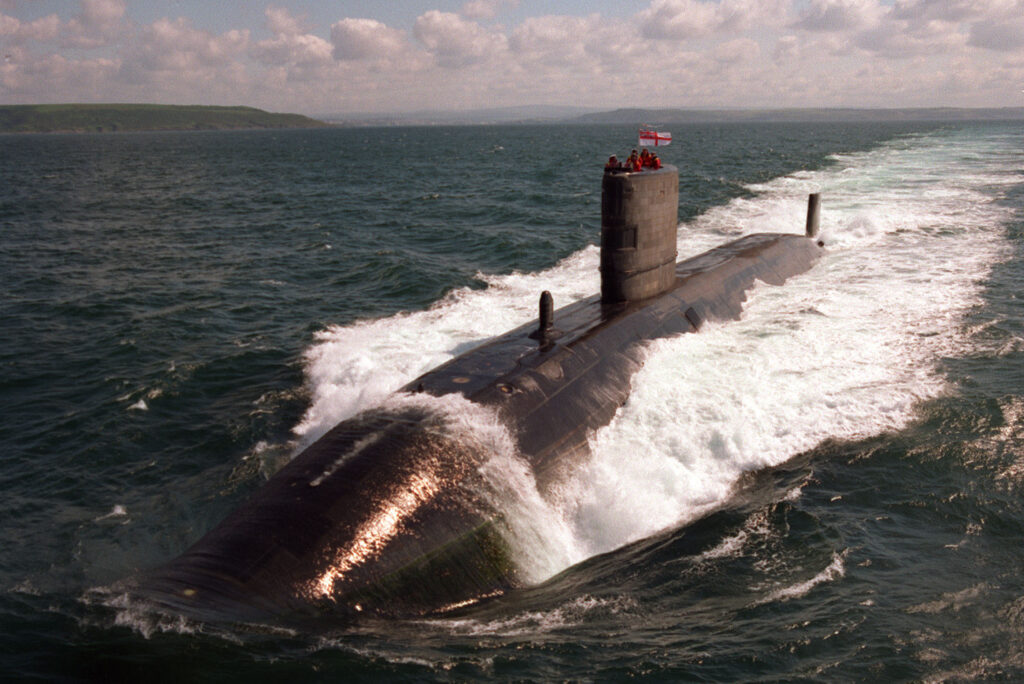
1990s
The first-of-class Trident-missile-armed submarine, Vanguard, was completed in 1993. Her class was built to replace the Resolution class, providing the UK’s strategic nuclear deterrent. The Vanguards were nearly twice the size of the Resolutions, displacing nearly 16,000 tonnes when dived. Each boat was allocated two crews, known as Port and Starboard, which alternated to maximise patrol time and allow for leave and training. There was always at least one of the four Vanguard class on patrol, maintaining the record of uninterrupted deterrent that the Resolution class had achieved.
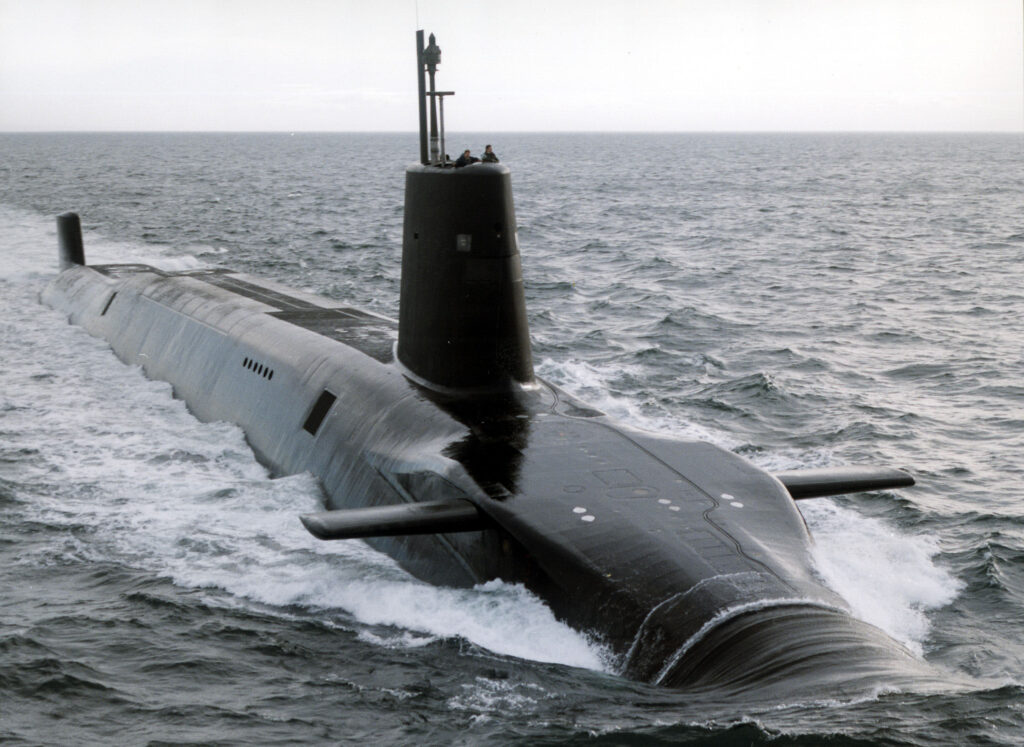
2000s
The landing platform dock (LPD) Bulwark, also known as an assault ship, and her sister ship Albion were built to replace the assault ships Fearless and Intrepid. Each ship could embark 830 troops and up to 40 trucks and artillery. A large door forward gave access for vehicles to enter from the dockside. A stern door gave access to the floodable dock for the four large landing craft carried, and four smaller troop landing craft were carried in davits. The flight deck could accommodate helicopters as large as Chinooks, though there was no hangar.
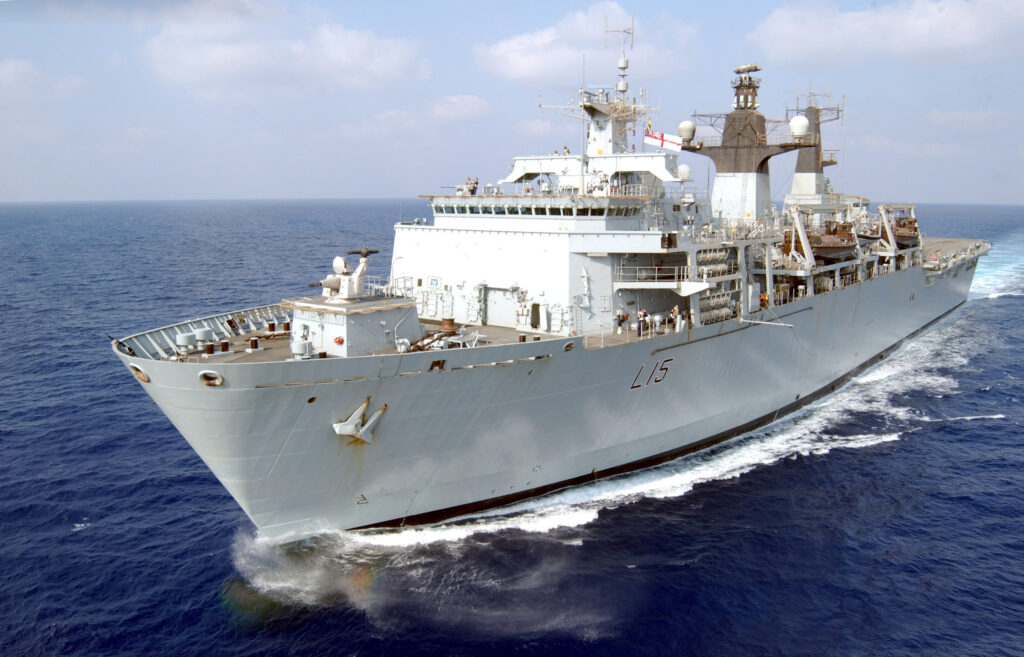
2010s
The Type 45 destroyer Diamond was designed for air defence of the fleet and commissioned in 2011. The silo abaft the 4.5-inch gun had 48 launchers to take both short and long-range Sea Viper ship-to-air missiles. She was equipped with a flight deck and hangar to embark a Lynx (later Wildcat) or Merlin helicopter. Originally twelve ships of the class were planned, to replace a similar number of Type 42s, but defence cuts meant that only six were built. They had a top speed of over 32 knots.
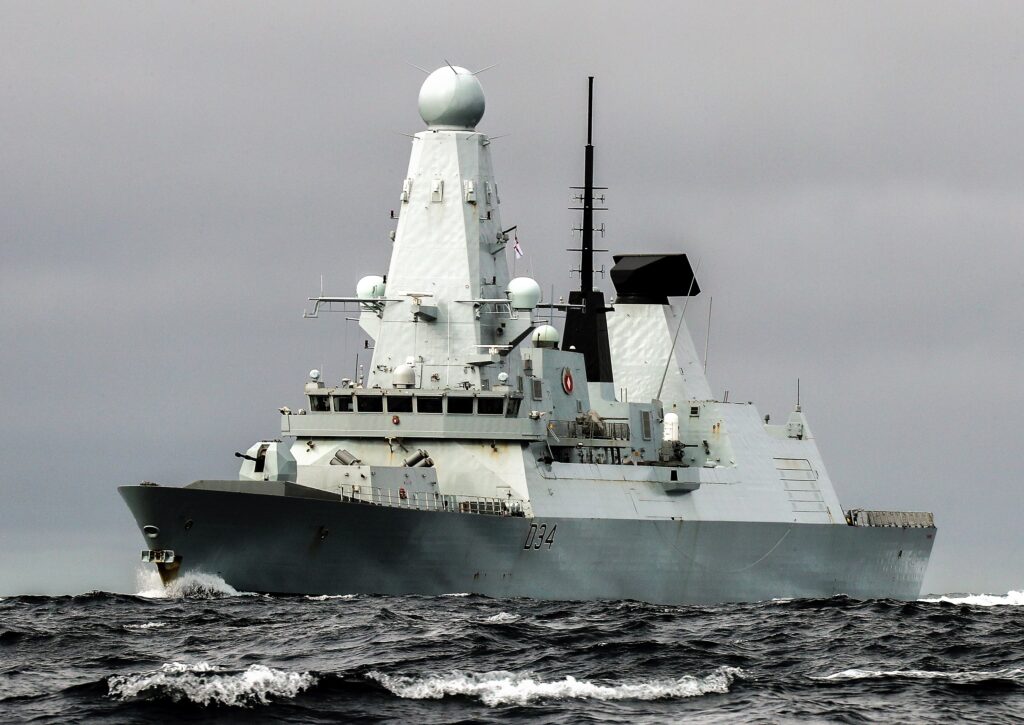
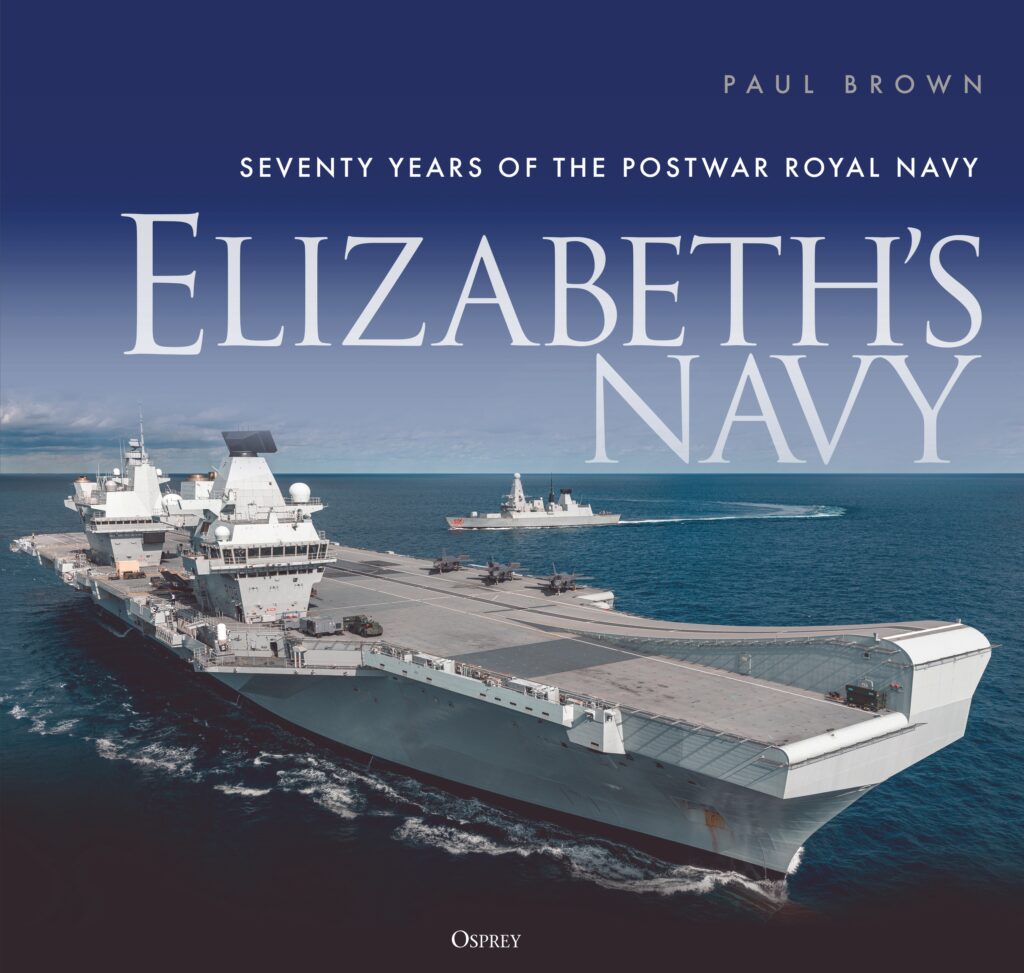
For more details see Paul Brown’s latest book, Elizabeth’s Navy: Seventy Years of the Post-War Royal Navy, which is published by Osprey Publishing and is on sale now.
To subscribe to History of War visit www.magazinesdirect.com
